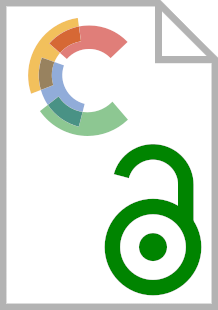Date: 2009
Type: Article
Striking a Balance between Property and Personality. The Case of the Avatars
Journal of Virtual Worlds Research, 2009, 1, 3, 1-53
GOMES DE ANDRADE, Norberto Nuno, Striking a Balance between Property and Personality. The Case of the Avatars, Journal of Virtual Worlds Research, 2009, 1, 3, 1-53
- https://hdl.handle.net/1814/13519
Retrieved from Cadmus, EUI Research Repository
Virtual worlds, as powerful social platforms of intense human interaction,
gather millions of users worldwide, producing massive economies of their own,
giving rise to the birth of complex social relationships and the formation of virtual
communities. By enabling the creativity of the player and figuring as an outstanding
example of new online collaborative environments, virtual worlds emerge as context
for creation, allowing for users to undertake a digital alter-ego and become artists,
creators and authors. Nevertheless, such digital egos are not merely creations, but a
reflex of their creators, an extension of their personalities and indicia of their
identities. As a result, this paper perceives the avatar not only as a property item
(avatar as the player’s or [game-developer’s] property) but also, and
simultaneously, as a reflex of our personality and identity (avatar as the projection
of one self in the virtual domain, as part of an individual persona). Bearing in mind
such hybrid configuration, and looking at the disputes over property rights in virtual
words, this essay makes three fundamental arguments.
Firstly, it proposes a re-interpretation of intellectual property rights (namely of
copyright law) according to its underlying utilitarian principles, as such principles
seem to have been forgotten or neglected in the sphere of virtual worlds. The idea is
to re-balance the uneven relationship between game owners and players perpetuated
by the end-user license agreements (EULAs), recognising property rights to users
over their own virtual creations. In order to evaluate whether a user’s contribution
to the virtual world amounts to an original and creative work and is worthy of
copyright protection, the essay proposes the image of a jigsaw puzzle as a tool and
criteria to carry out such examination.
Cadmus permanent link: https://hdl.handle.net/1814/13519
ISSN: 1941-8477
